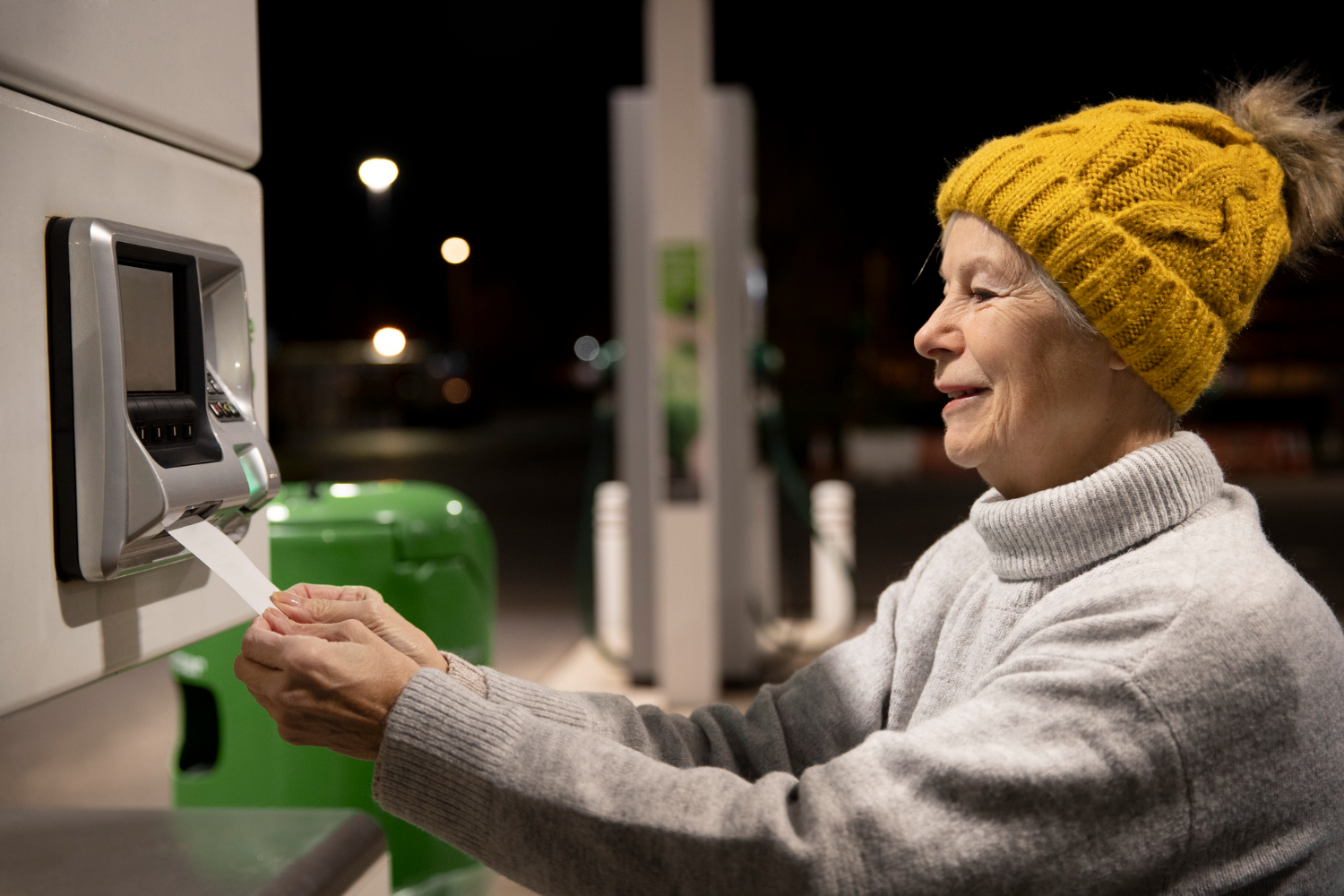Can you Deposit Cash at an ATM? In today’s fast-paced world, where convenience is paramount, the ability to deposit cash at an ATM has become a significant feature for many banking customers. Gone are the days of queuing up inside a bank branch to deposit money. With advancements in banking technology, ATMs now offer a wide range of functionalities, including the ability to deposit cash.
Introduction to ATM Deposits
Understanding the Convenience
ATM deposits offer unparalleled convenience by providing customers with the flexibility to deposit cash at any time of the day, regardless of banking hours. This convenience is particularly beneficial for individuals with busy schedules or those who prefer to handle their banking transactions outside of traditional business hours.
Evolution of Banking Technology
Can you Deposit Cash at an ATM: The introduction of ATM deposits represents a significant evolution in banking technology. Originally designed solely for cash withdrawals, ATMs have evolved to accommodate a variety of banking transactions, including cash and check deposits, bill payments, and account transfers. This evolution reflects the banking industry’s commitment to providing customers with convenient and efficient ways to manage their finances.
How ATM Deposits Work
ATMs are equipped with slots that accept cash deposits. When you insert cash into the designated slot, the ATM uses sensors to detect the currency’s denominations and count the total amount. Once the cash is accepted, it is securely stored within the ATM until it is retrieved by bank personnel during routine maintenance.
Mechanics of Cash Deposits
The mechanics of cash deposits at ATMs vary depending on the machine’s design and manufacturer. However, most ATMs feature a slot or tray where customers can insert their cash. Some ATMs may require users to insert bills one at a time, while others can accept multiple bills simultaneously.
Security Measures
Security is a top priority when it comes to ATM deposits. ATMs are equipped with various security features, including encryption technology, surveillance cameras, and tamper-evident seals, to protect against theft and fraud. Additionally, many ATMs are located in well-lit, highly visible areas to deter criminal activity.
Advantages of Depositing Cash at an ATM
Accessibility and Convenience
Can you Deposit Cash at an ATM: One of the primary advantages of depositing cash at an ATM is the convenience it offers. ATMs are typically available 24/7, allowing customers to make deposits at their convenience, even outside of regular banking hours. This accessibility ensures that customers can manage their finances on their terms, without being constrained by the limitations of traditional banking hours.
Time-saving Aspect
Depositing cash at an ATM is a time-saving endeavor. Instead of waiting in line at a bank branch, customers can quickly deposit cash within minutes using an ATM, freeing up valuable time for other tasks. This time-saving aspect is particularly beneficial for individuals with busy schedules or those who prefer to minimize the time spent on banking transactions.
No Need for Bank Visits
ATM deposits eliminate the need for physical visits to a bank branch. This is particularly beneficial for individuals who may not have easy access to a bank branch or who prefer to conduct their banking transactions remotely. By allowing customers to deposit cash at ATMs, banks can extend their reach and provide greater convenience to a wider range of customers.
Limitations of ATM Deposits
Transaction Limits
While ATM deposits offer many benefits, they are subject to certain limitations. One such limitation is transaction limits, which may restrict the amount of cash that can be deposited at one time. These limits can vary depending on factors such as the customer’s account type, banking relationship, and the policies of the issuing bank.
Potential Fees
While some banks offer free ATM deposits, others may impose fees for certain types of transactions or for using ATMs outside of their network. Customers need to familiarize themselves with their bank’s fee schedule to avoid unexpected charges. Additionally, customers should be aware of any fees associated with depositing cash at an ATM and factor them into their banking decisions accordingly.
Security Concerns
Although ATM deposits are generally secure, there is always a risk of theft or fraud. Criminals may attempt to steal cash or personal information from unsuspecting ATM users, either by physically tampering with the ATM or by using tactics such as card skimming. While banks employ various security measures to protect against these threats, customers should remain vigilant when using ATMs and take precautions to safeguard their personal and financial information.
Steps to Deposit Cash at an ATM
Preparing Cash for Deposit
Can you Deposit Cash at an ATM: Before depositing cash at an ATM, it’s essential to ensure that the bills are organized and free of damage or contamination. Crumpled or torn bills may not be accepted by the ATM, so it’s advisable to straighten them out and remove any foreign objects before proceeding with the deposit.
Initiating the Deposit Process
To deposit cash at an ATM, customers must first insert their debit card into the machine and follow the on-screen instructions to select the deposit option. Depending on the ATM’s interface, customers may be prompted to choose between depositing cash, checks, or both. Once the deposit option is selected, customers can proceed to insert their cash into the designated slot or tray.
Confirming the Transaction
After the cash has been deposited, the ATM will display a summary of the transaction, including the total amount deposited and any applicable fees. Customers should carefully review this information to ensure its accuracy before confirming the transaction. Once confirmed, the ATM will provide a receipt as proof of the deposit, which customers should retain for their records.
Safety Tips for ATM Deposits
Choosing Secure Locations
When depositing cash at an ATM, it’s essential to choose secure locations with ample lighting and visibility. Avoid using ATMs located in secluded or poorly lit areas, as these may be more susceptible to criminal activity. Instead, opt for ATMs located in busy public spaces or within bank branches, where there is a higher likelihood of surveillance and security personnel.
Checking for Skimming Devices
Skimming devices are small, discreet devices that criminals attach to ATMs to capture card information and personal identification numbers (PINs). Before using an ATM, take a moment to inspect the card reader and keypad for any signs of tampering or unusual attachments. Look for any loose or misaligned parts, as well as hidden cameras or suspicious-looking devices. If you notice anything out of the ordinary, refrain from using the ATM and report your findings to the bank immediately.
Monitoring Bank Statements
After making an ATM deposit, it’s essential to monitor your bank statements regularly to ensure that the deposit is processed correctly and reflects accurately in your account balance. Keep track of your transactions and verify that the deposited amount matches the total displayed on the ATM receipt. If you notice any discrepancies or unauthorized transactions, contact your bank immediately to address the issue and prevent further fraud.
Conclusion – Can you Deposit Cash at an ATM
In conclusion, the ability to deposit cash at an ATM offers unparalleled convenience and flexibility for banking customers. With advancements in banking technology and security measures, ATM deposits have become a secure and efficient way to manage finances. However, it’s essential for customers to be aware of any limitations, fees, and security concerns associated with ATM deposits and to take appropriate precautions to protect their personal and financial information.
Frequently Asked Questions
Q: Are there limits to the amount of cash I can deposit at an ATM?
A: Yes, most ATMs have daily or per-transaction limits on cash deposits. These limits can vary depending on factors such as your bank’s policies, your account type, and your banking relationship.
Q: What should I do if my ATM deposit doesn’t show up in my account?
A: If your ATM deposit doesn’t appear in your account within a reasonable timeframe, first verify that you followed all the correct steps during the deposit process. If everything seems in order and the deposit still hasn’t posted to your account, contact your bank to inquire about the status of the transaction and resolve any issues.
Q: Can I deposit coins at an ATM?
A: Most ATMs are designed to accept only cash deposits in the form of bills. If you need to deposit coins, you may need to visit a bank branch or use a coin-counting machine, if available.
Q: Are ATM deposits secure?
A: ATM deposits are generally secure, thanks to various security measures implemented by banks, such as encryption technology, surveillance cameras, and tamper-evident seals. However, it’s essential to remain vigilant and take precautions to protect your personal and financial information when using ATMs.
Q: Are there any fees associated with ATM cash deposits?
A: Some banks may charge fees for certain types of ATM transactions or for using ATMs outside of their network. Be sure to check your bank’s fee schedule to understand any potential charges associated with ATM cash deposits.
Dive Into More Articles: How to Cash Out on Robinhood



